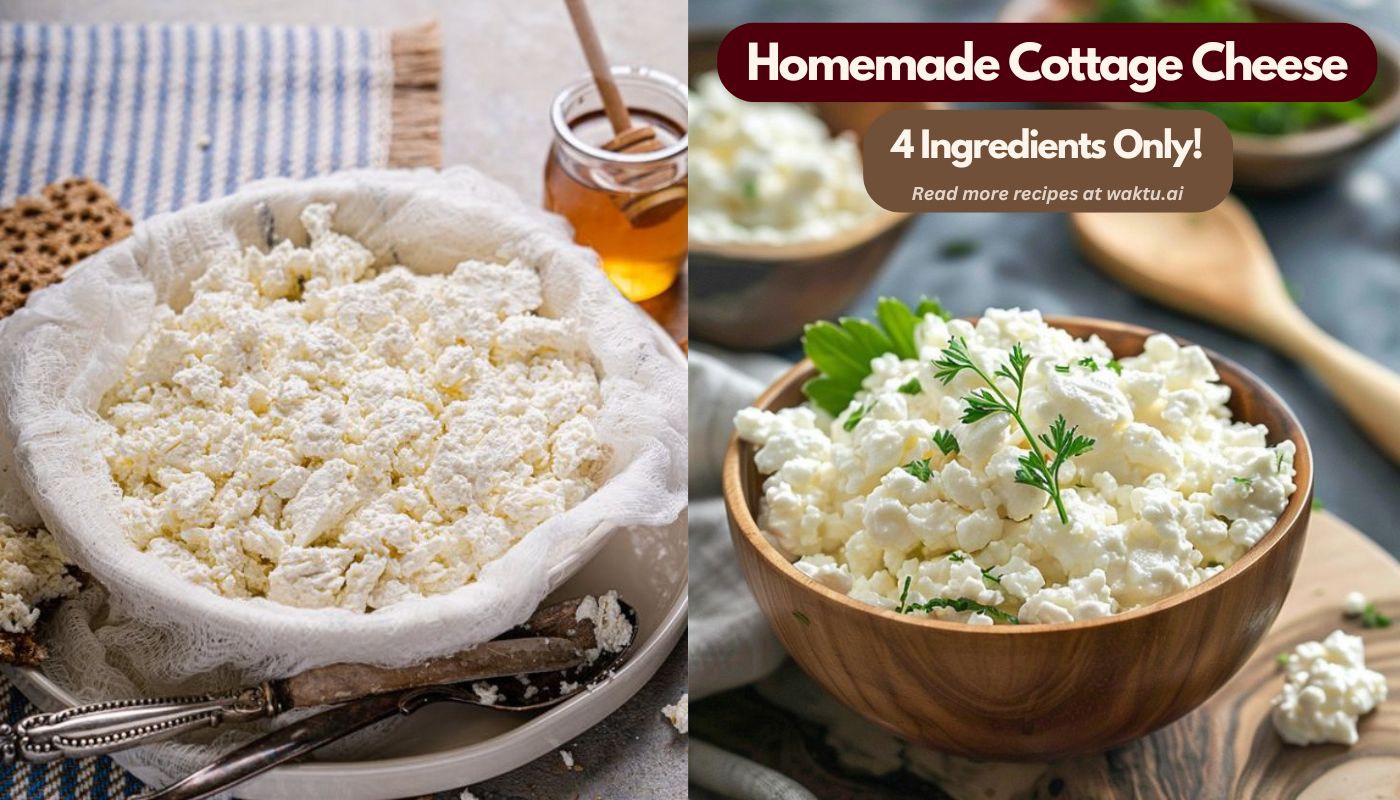Learn how to easily transform ordinary milk into delicious homemade cottage cheese with our step-by-step recipe. Impress your friends and family with this simple DIY culinary delight!
Transform Ordinary Milk into Delicious Homemade Cottage Cheese with This Recipe!
I was fed up with the tasteless and overpriced cottage cheese from the store. Just when I was about to give up, I stumbled upon a simple homemade recipe that transformed my view entirely!
My first attempt at making cottage cheese from scratch was shockingly easy and the result was so creamy and delicious, I couldn’t believe it was homemade. Trust me, following this recipe is a game-changer, and you’ll never go back to store-bought again.
What is Cottage Cheese?
Cottage cheese is a fresh cheese created by combining milk with an acidic ingredient to form small, firm curds. Historically, cottage cheese was made by leaving a container of milk on the counter to curdle or clabber through fermentation.
However, this isn’t a reliably safe method due to varying temperatures and the need for sterile equipment. Instead, this recipe employs a modern approach, using an acidic ingredient to curdle the milk.
Cottage Cheese Recipe
- Prep Time: 5 minutes
- Cook Time: 20 minutes
- Draining Time: 30 minutes
- Servings: 6 half-cup servings
Equipment
- Large pot
- Measuring cups and spoons
- Slotted spoon
- Cheesecloth (or clean kitchen towel)
- Colander
- Medium bowl
Ingredients
- 3.79 liter whole milk
- 191.25 gram white vinegar or 1/2 cup fresh lemon juice
- 1 teaspoon salt
- 3 tablespoon heavy cream (optional, see step 7)
Instructions
- Pour the milk into a large, heavy-bottomed pot. Gradually heat it while stirring regularly to prevent the milk from burning at the bottom. Aim to raise the temperature slowly until it reaches 190°F (88°C). This gradual heating process is crucial for the formation of firm curds.
- Remove the pot from the heat, then pour in the vinegar. Stir the mixture a few times to ensure it is well combined. After stirring, cover the pot and let it rest for 30 minutes.
- In the meantime, prepare a colander by lining it with a clean, doubled layer of cheesecloth or a tea towel. Place the colander over another bowl to catch any liquid (whey) that drips through.
- Using a spoon, gently transfer the solids from the pot into the lined colander. Avoid dumping the entire contents directly, as this could crush and break the delicate curds. Allow the mixture to drain for 30 minutes, letting the whey collect in the bowl beneath the colander.
- Gather the ends of the cloth together, forming a ball with the curds inside. Hold this ball with one hand under cold running water. While rinsing, gently squeeze the surface of the ball with your other hand until it cools down.
- Unwrap the cheese ball and carefully place it into a bowl. Using your hands or a utensil, break the cheese into curds of your desired size.
- If you started with skim or 2% milk: add 2 tablespoons of heavy cream for 2% cottage cheese. Or add 4 tablespoons of heavy cream for 4% cottage cheese. If you started with whole milk: stir in 2 tablespoons of heavy cream for 4% cottage cheese. (Whole milk can’t make 2% cottage cheese.)
- Add salt to taste. To achieve optimal flavor, refrigerate the dish for 30 minutes prior to serving.
- To ensure your homemade cottage cheese remains fresh and safe to consume, store it in an airtight container in the refrigerator. For optimal freshness, aim to consume it within one week.
- An effective tip to extend its shelf life slightly is to store the container upside down, with the lid on the bottom, creating a “seal” that helps preserve its freshness.
Tips for Best Results
Heat the Milk Slowly:
Gradually heating the milk allows the proteins to form strong curds. Avoid boiling the milk; aim to bring it to 190°F, which is just below boiling point. The milk should appear foamy but not bubbling. (Refer to my video for a visual guide.)
Use Standard Cow Milk:
This recipe works best with 2% or whole cow’s milk. The milk does not need to be raw, but avoid using ultra-heat processed milk, as it alters the proteins. Therefore, low-carb, lactose-free, powdered, canned, and evaporated milks are unsuitable for this recipe.
Save the Whey:
Whey is highly nutritious but can cause your cottage cheese to spoil quickly if not removed. I freeze whey in bags and add it to soups or smoothies later. Alternatively, you can make ricotta cheese by following my cottage cheese recipe with 4 cups of fresh whey and 2 cups of milk while reducing the vinegar to 1 tablespoon.
Source: housewifehowtos

